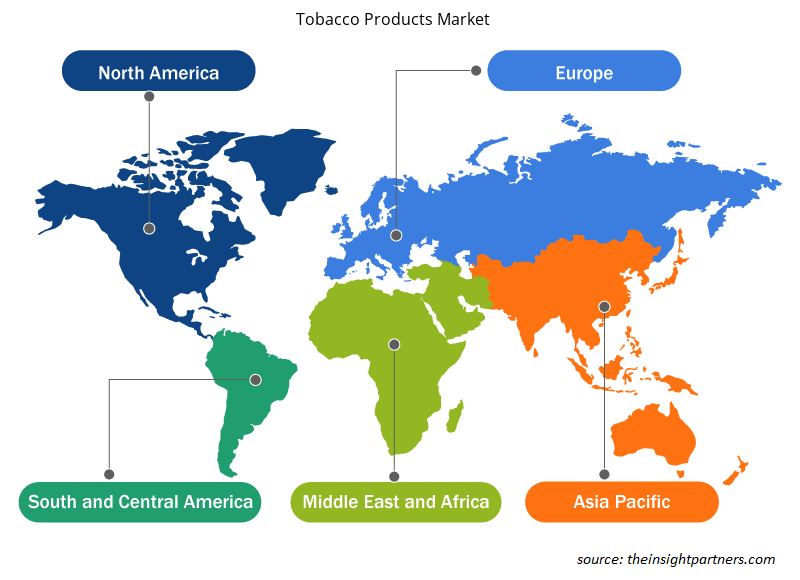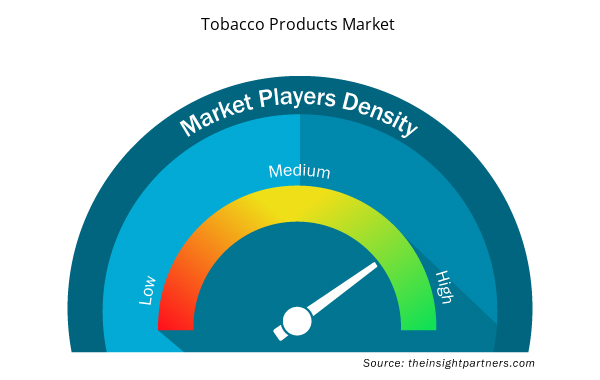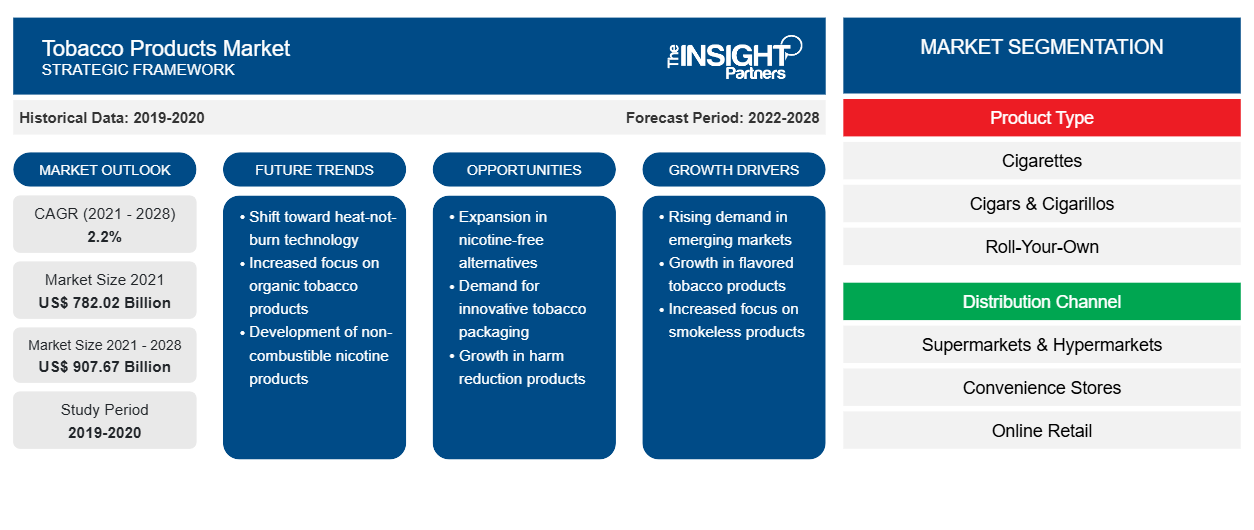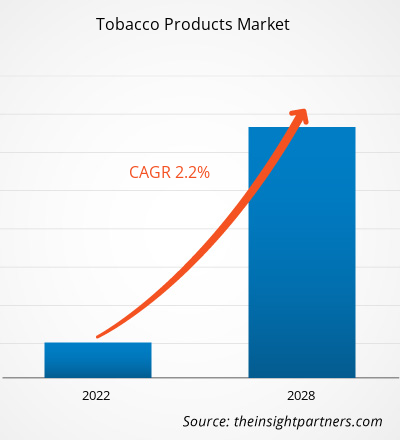烟草制品市场规模预计将从 2021 年的 7,820.2219 亿美元增至 2028 年的 9,076.6543 亿美元。预计 2021 年至 2028 年的复合年增长率为 2.2%。
不同品种的烟叶,如弗吉尼亚烟叶和白肋烟叶,被混合制成香烟、雪茄和小雪茄以及自卷烟等产品。在经济放缓时期,由于股市下跌和抵押品赎回权丧失,以及与裁员相关的压力,全球烟草及相关产品的消费量增加,这促使许多人通过吸烟寻求庇护。烟草是世界上最常见的成瘾物质之一。它还为发达和发展中经济体的各个国家贡献了大部分税收收入。
2020 年,亚太地区占据烟草制品市场的最大份额,而中东和非洲预计在预测期内市场将实现显著的复合年增长率。烟草制品市场的主要参与者正在中东和非洲扩大业务,因为该地区拥有潜在的客户群、有利的法律以及快速发展的零售格局。
定制此报告以满足您的需求
您可以免费定制任何报告,包括本报告的部分内容、国家级分析、Excel 数据包,以及为初创企业和大学提供优惠和折扣
- 获取此报告的关键市场趋势。这个免费样品将包括数据分析,从市场趋势到估计和预测。
COVID-19 疫情对烟草制品市场的影响
2020 年初,COVID-19 疫情给许多行业带来了前所未有的挑战。各国政府根据世卫组织和各国卫生部的指导方针实施的封锁、边境限制、旅行禁令、生产停工和其他安全措施阻碍了制造业的运营。另一方面,根据美国内科医师学会的研究,在 COVID-19 疫情爆发的前 16 个月,美国的香烟销量超出预期。疫情期间,大多数烟草公司都见证了无烟或加热烟草产品和嚼烟产品需求的激增。然而,由于旅行禁令,他们的零售旅行销售额略有下降。
市场洞察
非燃烧烟草产品需求激增推动市场增长
由于人们对可燃烟草制品消费的健康担忧日益增加,各国政府鼓励企业出台多项法律法规来控制烟草消费。他们提高了可燃烟草税,降低了不可燃烟草价格。这导致电子烟等不可燃产品的使用量增加。例如,英国政府采取了整体方法,大幅提高可燃烟草制品的税收,降低不可燃产品的税收。这增加了电子烟在英国市场的采用率,大大降低了该国的吸烟率。制造商还开发了口服、不可燃或无烟烟草产品,属于低风险产品 (RRP) 类别。RRPs) category.
产品类型洞察
根据产品类型,烟草产品市场分为香烟、雪茄和小雪茄、自卷烟和其他。其他烟草产品部分预计在预测期内的复合年增长率最高。该部分包括电子烟、蒸汽烟、鼻烟和可溶解烟草。人们对可燃烟草产品危害的认识不断提高,推动了对不可燃烟草产品(如电子烟、蒸汽烟和嚼烟产品)的需求。
分销渠道洞察
根据分销渠道,烟草产品市场细分为超市和大卖场、便利店、在线零售等。预计在预测期内,在线零售市场将实现最高的复合年增长率。在线零售为用户提供便捷的购物体验,其次是简化的产品交付。在线零售商店以大幅折扣提供各种产品;此外,消费者可以方便地远程购买所需的产品。送货上门服务鼓励大量消费者通过电子商务门户购物。
烟草产品市场的主要参与者包括奥驰亚集团、英美烟草公司、瑞典火柴公司、ITC 有限公司、日本烟草国际公司、帝国品牌公司、菲利普莫里斯产品公司、维克多集团、Pyxus 国际公司和中国烟草国际(香港)有限公司。这些参与者致力于开发降低健康风险的产品以满足新兴的消费趋势,同时遵守监管框架。他们参与并购、业务扩张和合作以扩大市场份额。
烟草产品市场区域洞察
Insight Partners 的分析师已详细解释了预测期内影响烟草产品市场的区域趋势和因素。本节还讨论了北美、欧洲、亚太地区、中东和非洲以及南美和中美洲的烟草产品市场细分和地理位置。

- 获取烟草产品市场的区域特定数据
烟草产品市场报告范围
| 报告属性 | 细节 |
|---|---|
| 2021 年市场规模 | 7820.2亿美元 |
| 2028 年市场规模 | 9076.7亿美元 |
| 全球复合年增长率(2021 - 2028) | 2.2% |
| 史料 | 2019-2020 |
| 预测期 | 2022-2028 |
| 涵盖的领域 | 按产品类型
|
| 覆盖地区和国家 | 北美
|
| 市场领导者和主要公司简介 |
|
烟草产品市场参与者密度:了解其对商业动态的影响
烟草产品市场正在快速增长,这得益于终端用户需求的不断增长,而这些需求又源于消费者偏好的不断变化、技术进步以及对产品优势的认识不断提高等因素。随着需求的增加,企业正在扩大其产品范围,进行创新以满足消费者的需求,并利用新兴趋势,从而进一步推动市场增长。
市场参与者密度是指在特定市场或行业内运营的企业或公司的分布情况。它表明相对于给定市场空间的规模或总市场价值,有多少竞争对手(市场参与者)存在于该市场空间中。
在烟草产品市场运营的主要公司有:
- 奥驰亚集团
- 英美烟草公司
- 瑞典火柴公司
- 国贸有限公司
- 日本烟草国际公司
免责声明:上面列出的公司没有按照任何特定顺序排列。

- 获取烟草产品市场顶级关键参与者概览
报告亮点
- 烟草产品市场的渐进式行业趋势,帮助参与者制定有效的长期战略
- 采取业务增长战略以确保发达市场和发展中市场的增长
- 2019年至2028年烟草制品市场定量分析
- 全球烟草产品需求量估计
- 波特五力分析说明了行业内买家和供应商的效力
- 了解竞争市场状况的最新发展
- 市场趋势和前景以及影响烟草产品市场增长的因素
- 通过强调支撑商业利益的市场策略来协助决策过程,从而促进市场增长
- 不同节点烟草制品市场规模
- 市场详细概述和细分以及烟草行业动态
- 各地区增长规模及增长机遇
- 历史分析(2 年)、基准年、预测(7 年)及复合年增长率
- PEST 和 SWOT 分析
- 市场规模价值/数量 - 全球、区域、国家
- 行业和竞争格局
- Excel 数据集


- Single-Use Negative Pressure Wound Therapy Devices Market
- Aircraft Wire and Cable Market
- Aesthetic Medical Devices Market
- Mobile Phone Insurance Market
- Grant Management Software Market
- Educational Furniture Market
- Hummus Market
- Long Read Sequencing Market
- Power Bank Market
- Constipation Treatment Market

Report Coverage
Revenue forecast, Company Analysis, Industry landscape, Growth factors, and Trends

Segment Covered
This text is related
to segments covered.

Regional Scope
North America, Europe, Asia Pacific, Middle East & Africa, South & Central America

Country Scope
This text is related
to country scope.
常见问题
The global tobacco products market is primarily driven by the rising consumption of tobacco products in developing regions such as Asia-Pacific and the Middle East & Africa.
Based on product type, the other tobacco products segment is projected to grow at the fastest CAGR. Other tobacco products include e-cigarettes & vapes, snus, dissolvable, among others. The growing awareness about the hazardous effects of smoking among consumers is driving the demand for e-cigarettes, vapes, and snus.
Based on distribution channel, the supermarkets and hypermarkets segment held the largest market share owing to high customer traffic in these stores coupled with availability of different brands of tobacco products under one roof.
In 2020, Asia-Pacific led the global tobacco products market owing to the rising number of tobacco consumers across India, China, Japan, among other countries, changing lifestyles of people, increasing disposable income level, and easy available of different brands of tobacco products in the region
The tobacco products market is highly regulated. The manufacturers of tobacco products have to comply with stringent packaging and labeling regulations set by various regulatory bodies across different countries. Moreover, there are few yet dominant market players having strong distribution network and well-established customer base. Further, governments of different nations impose high duties on tobacco products to minimize their consumption. These are some of the entry barriers in the market.
Some of the prominent players operating in the global tobacco products market include Altria Group, Inc.; British American Tobacco plc; Swedish Match AB; ITC Ltd.; Japan Tobacco International; Imperial Brands; Philip Morris Products S.A.; Vector Group LTD.; Pyxus International, Inc.; and China Tobacco International (HK) Company Limited.
Trends and growth analysis reports related to Consumer Goods : READ MORE..
The List of Companies - Tobacco Products Market
- Altria Group, Inc.
- British American Tobacco plc.
- Swedish Match AB
- ITC Ltd.
- Japan Tobacco International
- Imperial Brands
- Philip Morris Products S.A.
- Vector Group LTD.
- Pyxus International, Inc.
- China Tobacco International (HK) Company Limited
The Insight Partners performs research in 4 major stages: Data Collection & Secondary Research, Primary Research, Data Analysis and Data Triangulation & Final Review.
- Data Collection and Secondary Research:
As a market research and consulting firm operating from a decade, we have published and advised several client across the globe. First step for any study will start with an assessment of currently available data and insights from existing reports. Further, historical and current market information is collected from Investor Presentations, Annual Reports, SEC Filings, etc., and other information related to company’s performance and market positioning are gathered from Paid Databases (Factiva, Hoovers, and Reuters) and various other publications available in public domain.
Several associations trade associates, technical forums, institutes, societies and organization are accessed to gain technical as well as market related insights through their publications such as research papers, blogs and press releases related to the studies are referred to get cues about the market. Further, white papers, journals, magazines, and other news articles published in last 3 years are scrutinized and analyzed to understand the current market trends.
- Primary Research:
The primarily interview analysis comprise of data obtained from industry participants interview and answers to survey questions gathered by in-house primary team.
For primary research, interviews are conducted with industry experts/CEOs/Marketing Managers/VPs/Subject Matter Experts from both demand and supply side to get a 360-degree view of the market. The primary team conducts several interviews based on the complexity of the markets to understand the various market trends and dynamics which makes research more credible and precise.
A typical research interview fulfils the following functions:
- Provides first-hand information on the market size, market trends, growth trends, competitive landscape, and outlook
- Validates and strengthens in-house secondary research findings
- Develops the analysis team’s expertise and market understanding
Primary research involves email interactions and telephone interviews for each market, category, segment, and sub-segment across geographies. The participants who typically take part in such a process include, but are not limited to:
- Industry participants: VPs, business development managers, market intelligence managers and national sales managers
- Outside experts: Valuation experts, research analysts and key opinion leaders specializing in the electronics and semiconductor industry.
Below is the breakup of our primary respondents by company, designation, and region:

Once we receive the confirmation from primary research sources or primary respondents, we finalize the base year market estimation and forecast the data as per the macroeconomic and microeconomic factors assessed during data collection.
- Data Analysis:
Once data is validated through both secondary as well as primary respondents, we finalize the market estimations by hypothesis formulation and factor analysis at regional and country level.
- Macro-Economic Factor Analysis:
We analyse macroeconomic indicators such the gross domestic product (GDP), increase in the demand for goods and services across industries, technological advancement, regional economic growth, governmental policies, the influence of COVID-19, PEST analysis, and other aspects. This analysis aids in setting benchmarks for various nations/regions and approximating market splits. Additionally, the general trend of the aforementioned components aid in determining the market's development possibilities.
- Country Level Data:
Various factors that are especially aligned to the country are taken into account to determine the market size for a certain area and country, including the presence of vendors, such as headquarters and offices, the country's GDP, demand patterns, and industry growth. To comprehend the market dynamics for the nation, a number of growth variables, inhibitors, application areas, and current market trends are researched. The aforementioned elements aid in determining the country's overall market's growth potential.
- Company Profile:
The “Table of Contents” is formulated by listing and analyzing more than 25 - 30 companies operating in the market ecosystem across geographies. However, we profile only 10 companies as a standard practice in our syndicate reports. These 10 companies comprise leading, emerging, and regional players. Nonetheless, our analysis is not restricted to the 10 listed companies, we also analyze other companies present in the market to develop a holistic view and understand the prevailing trends. The “Company Profiles” section in the report covers key facts, business description, products & services, financial information, SWOT analysis, and key developments. The financial information presented is extracted from the annual reports and official documents of the publicly listed companies. Upon collecting the information for the sections of respective companies, we verify them via various primary sources and then compile the data in respective company profiles. The company level information helps us in deriving the base number as well as in forecasting the market size.
- Developing Base Number:
Aggregation of sales statistics (2020-2022) and macro-economic factor, and other secondary and primary research insights are utilized to arrive at base number and related market shares for 2022. The data gaps are identified in this step and relevant market data is analyzed, collected from paid primary interviews or databases. On finalizing the base year market size, forecasts are developed on the basis of macro-economic, industry and market growth factors and company level analysis.
- Data Triangulation and Final Review:
The market findings and base year market size calculations are validated from supply as well as demand side. Demand side validations are based on macro-economic factor analysis and benchmarks for respective regions and countries. In case of supply side validations, revenues of major companies are estimated (in case not available) based on industry benchmark, approximate number of employees, product portfolio, and primary interviews revenues are gathered. Further revenue from target product/service segment is assessed to avoid overshooting of market statistics. In case of heavy deviations between supply and demand side values, all thes steps are repeated to achieve synchronization.
We follow an iterative model, wherein we share our research findings with Subject Matter Experts (SME’s) and Key Opinion Leaders (KOLs) until consensus view of the market is not formulated – this model negates any drastic deviation in the opinions of experts. Only validated and universally acceptable research findings are quoted in our reports.
We have important check points that we use to validate our research findings – which we call – data triangulation, where we validate the information, we generate from secondary sources with primary interviews and then we re-validate with our internal data bases and Subject matter experts. This comprehensive model enables us to deliver high quality, reliable data in shortest possible time.


 获取此报告的免费样本
获取此报告的免费样本